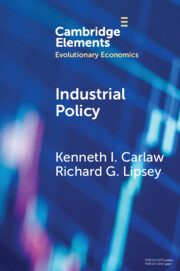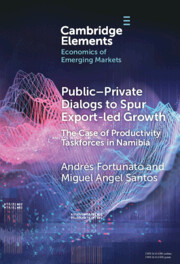Industrial Policy
Dismissing industrial policy because 'governments cannot pick winners' is counter-productive. This Element studying selected major innovations illustrates the fact that virtually all major new technologies have been developed by a synergetic cooperation between the public and the private sectors, each doing what it can do best. By examining how R&D is financed, rather than where it takes place, the authors show that the role of the public sector is much more pronounced than is often thought. The nature of the cooperation − who does what − varies with the nature of each innovation so that simple, one-size-fits-all, rules about what each sector should do are suspect. These results are particularly important because they challenge the scepticism in the United states and elsewhere about the importance of industrial policy, a scepticism that threatens to undermine the long-term, and necessary cooperation, between the public and private sectors in promoting growth-inducing innovations.
Product details
June 2022Adobe eBook Reader
9781009227506
0 pages
This ISBN is for an eBook version which is distributed on our behalf by a third party.
Table of Contents
- 1. Introduction
- 2. Policy Implications Of Two Views Of The Economy
- 3. Concepts and Definitions
- 4. Case Studies
- 5. General Lessons
- 6. Summary
- Appendix: Bell Labs
- References.






